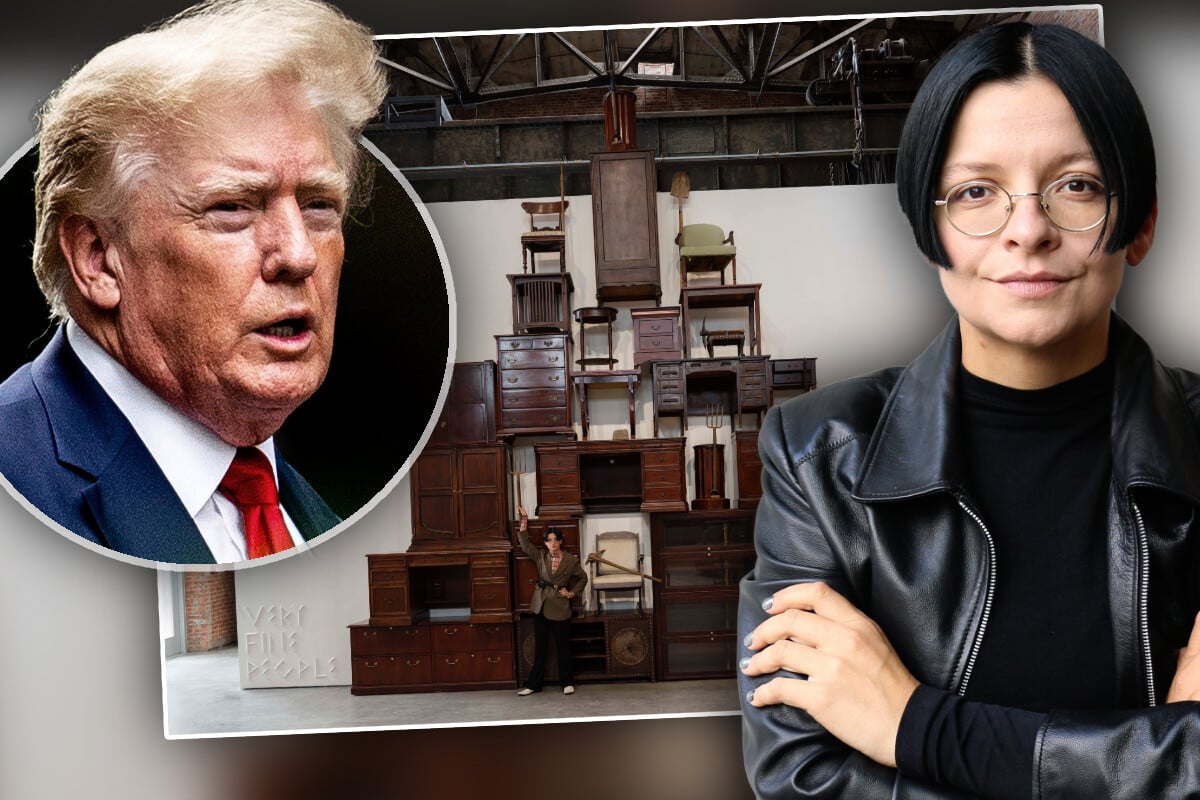Here the invitation has become familiar: their mailboxes, the city walls and sometimes their emails have informed the 200,000 inhabitants of the opening Wednesday of the consultation on the “green” steel project carried out by ArcelorMittal. Because in Dunkirk the public debate has become a local sport since the various mayors of the left, Patrice Vergriete, have decided to make it a laboratory for a “carbon free” industry (lower CO2 emissions).
Previously it was Verkor, the little French genius of electric car batteries, who presented his project for “the largest factory in Europe” dedicated to these essential products, “enough to equip 300,000 vehicles a year in 2027”, according to its co-founder Sylvain Paineau. And before this public debate, another one had taken place on the future offshore wind farm.
Break free from “dad’s industry”
In Dunkirk, projects flourish at a frenetic pace. To decarbonise the area, the gear is high: the agglomeration emits 21% of industrial CO2 in France. “We are fortunate to represent a fifth of the country’s industrial emissions,” dares the chairman of the board of directors of the Grand Port maritime de Dunkirk, Maurice Georges. If they decrease by 30% by 2030, we will have reduced national emissions by 6%! »
“Reducing Dunkirk solves a large part of the problem”, summarizes a specialist in the file. Thus, very early on, and against the tide of a France of services that was gradually abandoning its factories, Patrice Vergriete sensed that the future could be… industrial. “But on the condition of letting industry go à la papa”, he judges. The elected official has favored the establishment of companies that allow for cleaner production.
“Green” steel.
And this green revolution necessarily begins with ArcelorMittal, the city’s largest employer and France’s largest emitter. At Dunkirk, its three blast furnaces, in which iron ore is processed using coal, release 7.4 million tonnes of CO2 a year. “Our goal is to have decreased by 36% in 2030”, advances the director of the decarbonisation program of ArcelorMittal France, Emmanuel Deneuville. “Green” steel? Two of the three blast furnaces will be replaced by a direct iron reduction plant, where the ore will be processed first with gas, then with hydrogen, which is cleaner.
Generous public subsidies have also attracted nuggets. At Loon-Plage, the H2V plant will produce 28,000 tonnes of hydrogen per year; in Coudekerque-Branche, Jaouad Zemmouri, a former physics professor at the University of Lille, has invented a circuit to capture pollution as it leaves factory chimneys. At the head of Terrao he also patented an ingenious system for recovering CO2, for transforming it into synthetic fuel, for example. Many of these projects, conceived as an ecosystem, will be connected by a “highway of heat” which will recover the calories lost by the industrialists and re-inject them into the urban network.
The wind of innovation blows strongly in the North. At the Elysée last week, Emmanuel Macron promised to double the aid provided by the France 2030 plan to decarbonise industry: from 5 to 10 billion euros if the large emitters double their reduction efforts. ArcelorMittal has also obtained state support to finance the 1.7 billion investment it intends to make in its Dunkerque and Fos-sur-Mer (Bouches-du-Rhône) sites; the group awaits the green light from Brussels, which should validate this impulse.
Human dimension and social cost
But to decarbonise, electricity is needed in quantity… and green. “However, all electrical uses will increase, explains Nicolas Berghmans, a researcher at the Institute for Sustainable Development and International Relations. There is industry, but also heat pumps in buildings, car batteries… Will there be enough? » In Dunkirk, the focus is on the 46 wind turbines at sea scheduled for 2028, on the project for the photovoltaic power plant in the port and on two of the six future French EPRs, the new generation nuclear reactors which should see the light in the nearby city of Gravelines.
In the plans, Dunkirk already looks like tomorrow. A tour of Fort-Mardyck, a neighborhood at the foot of Arcelor, however, brings us back to reality. This summer, plumes of orange smoke have worried local residents, with no impact on health, according to the group. In the industrial site, on the other hand, the modular constructions, windscreens and panels are covered with red dust; and the piles of coal on both sides of the road look like black scars on a green future.
Free public transport
The carbon-free revolution also has a social cost. “Yesterday’s professions will disappear, acknowledges Patrice Vergriete. The human dimension of this transformation is remarkable. » At the steel giant’s CGT, Reynald Quaegebeur is concerned that he hasn’t seen a training plan. Arcelor’s management does not anticipate figures and promises: “All our blast furnaces won’t stop tomorrow! »
Faced with the need to move forward, the mayor talks about the attractiveness and purchasing power of the area. In Dunkirk, public transport is free, the reuse of rainwater is supported by municipal aid and a very profitable system has been put in place to renovate houses. “We will not succeed if the majority of the population does not share this great national ambition, the chosen one is convinced. The industrial revolution took a century and we have twenty years to revolutionize the energy transition! »


